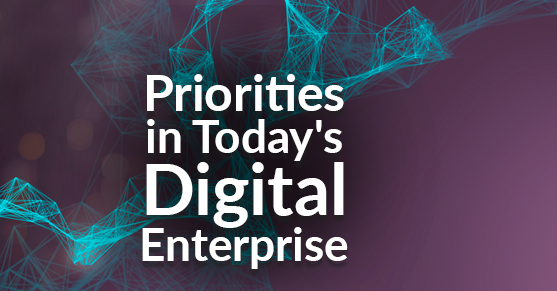Digital enterprise is changing the way business is done. Business initiatives and priorities are nothing like they were just five years ago. In a market that’s now centered around customer experience and delivering modern solutions to the problems of tomorrow, where companies invest their resources today is very different than it was in 2015.
So what are the digital priorities of the modern enterprise? Where are their investments going? How should a modern enterprise expend their resources?
At XTIVIA, we handle accounts at every phase of organizational development and have offered our answers to the primary concerns for enterprises in 2020. In short, the three digital priorities worthy of leading-edge business investment are digital transformation, frictionless enterprise, and future-proof technology. Let’s take a look at how each holds the reins for visionary companies regardless of industry.
Digital Transformation
While digital transformation is often seen as a new business priority, it is anything but new. What was once thought of as “operational excellence,” digital transformation is simply the current language for enhancing processes to deliver greater value, introducing new technology to leverage systems, and developing an enterprise architecture to meet the growth demands of industry. Woven throughout all aspects of digital transformation are the people who drive the entire operation. One of the most significant keys to successful digital transformation — beyond the technology and architecture — is the people of your organization who adopt a culture, or collective mentality, around digital transformation.
Some great examples of how organizations are engaging in digital transformation were recounted by Senior Business Development Manager at XTIVIA, Don Volanksy, during a recent live session with XTIVIA’s Lead Digital Strategist, Lynn Scheurell. They discussed clients who have reached out to XTIVIA for help with data quality improvements, data management integrations, ETL processing enhancement, and other projects necessary for digital transformation.
When it comes to these types of projects, companies need assistance around data strategy, integration, and quality: businesses find themselves in a state of chaos, data living in multiple and disparate places, duplicates and inaccuracies in abundance, and limited advantages from their servers, technical environment, and/or protocols. Once they have a trusted partner with deep expertise like XTIVIA to help them through the process of establishing strategy and systems, as well as teaching their teams how to manage aspects of digital transformation along the way, these organizations give themselves the tools to take their business from 2001 to 2020 and beyond.
The Frictionless Enterprise
In some form, “frictionless enterprise” has already made its way into your organization with good reason. When an enterprise is frictionless, it has eliminated constraints, updated technology, and operations, and every aspect of your business is streamlined. The ideal frictionless enterprise has adopted dynamic systems and seamless processes to meet the needs of their customers, users, and overall business goals. Every time your organization has adopted a new technology, process or protocol, the unspoken goal has been to become frictionless.
In his Forbes article, “The Frictionless Enterprise,” Vivek Agarwal, Chief Technology Officer at XTIVIA, says, “The target result [of frictionless enterprise] is to meet your customers and users in their context and reduce their effort in getting what they want from your organization.”
Positioning your business as a frictionless enterprise, where the technology that supports it is “invisible,” can include numerous projects including reallocating staff duties and resources, updating legacy technologies, migrating to the cloud, engaging with new types of customers, leveraging new applications, and more. It’s not just about implementing new technology; it’s about instilling a culture of efficiency and then neutralizing or eliminating roadblocks, obstacles, and barriers between your organization and your people (both customers and users).
Future-Proof Technology
Lisbi Abraham, former CIO at Andela, said in a Forbes article, “Nothing is ever future-proofed. Technologies will change, requirements will change, tastes will change.” Over the years, this has proved to be true with the constant change in technology and rapid obsoletion of systems as new, more streamlined versions come out regularly. Yet, there are qualities about “future-proof” technology that are fully attainable: flexible and scalable adaptability.
Technologies come and go, but when your business accommodates the never-ending flow of new systems and integrations, then you have a future-proof enterprise. In other words, your IT infrastructure, people, and processes adapt as dynamic needs change over time. The same trifecta of people, processes, and technology that offer a road to digital transformation naturally future-proof your organization.
The Takeaway
All three priorities, no matter which one you start with or strive to achieve, require the trifecta of people, technology, and processes. Without those three working in sync, focused on the same goal, you are not making the most of your resources. However, having alignment among your people, your systems, and your internal processes will further growth initiatives and take your company beyond modern enterprise into the future of business.
For more information on digital transformation, frictionless enterprise, future-proof technology, or the latest in technology, check out our live sessions or visit our blog here.

